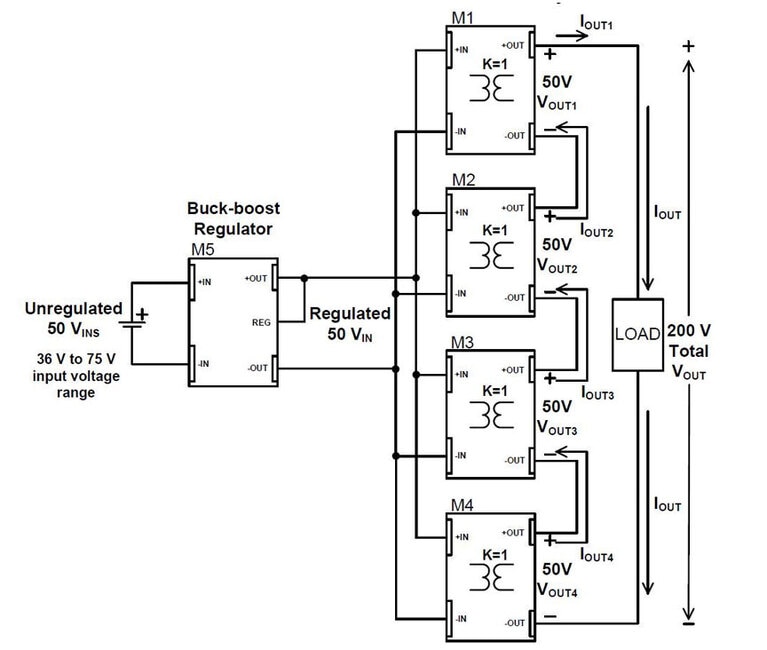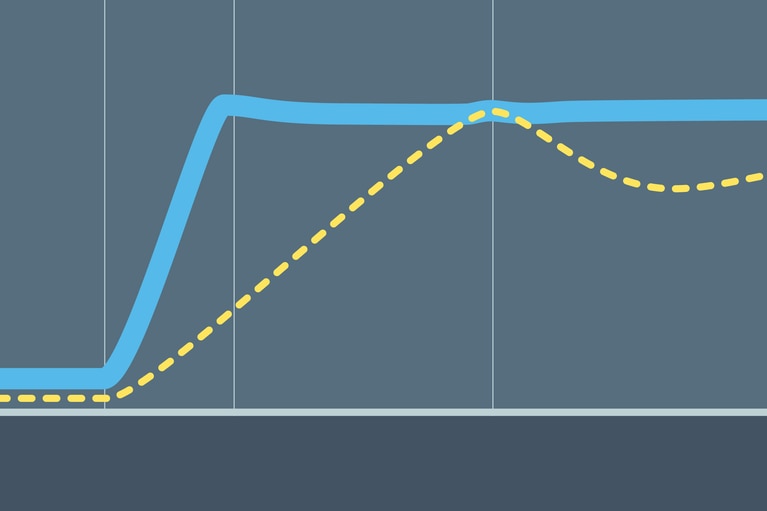
ReVolt – Technical Q&A
ReVolt is cleaning up Hollywood's emission problems today and next will address construction sites, emergency response and events with portable DC power
Dear vicorpower.com users:
In an effort to improve the Vicor website, we will be conducting maintenance on the site Dec. 29th between 11:30 am and 2pm am EST.
Certain parts of the site may not be available during this time, specifically product pages and family matrices.
We apologize for any inconvenience and thank you for your patience.
– Vicor Web Team
Vicor devices such as the VTM and BCM use the Sine Amplitude Converter Topology (SAC) to provide isolation and voltage transformation functions, allowing you to place these functions where they are required, separating them from regulation.
The SAC also allows a flexible approach to design: devices based upon this topology can be used on their own, or connected in series or parallel to provide higher output currents or voltages.Figure 1 – Connecting VTMs in series and parallel
Consider the following example: a regulated 200V rail is needed at the load from a 36V to 75V input voltage. To achieve this, four 50V output voltage SAC modules (VTMs) M1, M2, M3 and M4 of the same K factor of 1 are used. Input and output voltage is equal for a K factor of 1. Output current IOUT is common to all SAC modules. In this implementation, it is important to enable all SAC modules in a group to start all of them simultaneously for correct operation of resulting converter.
Total output voltage is the sum of output voltage given by all SACs connected in series output as given below for N number of SACs.
Where Total_VOUT = Total output voltage of series connect sine amplitude converters. N is the number of SAC modules. KN and VOUTN are the transformation factor and output voltage for each series connected SAC, VIN is the SAC input voltage which is equal to the output voltage of the regulator modules and VINS is the voltage of the unregulated input voltage source applied at the input terminals of the regulator.
The final system is shown below:
Figure 2: 50 V Input, 200 V Output Power Chain Using VTMs in Series
Related content
Product overview: PRM and VTM
Application note: PRM and VTM parallel array operation
Application note: Creating higher voltage outputs using series connected sine amplitude converter
ReVolt – Technical Q&A
ReVolt is cleaning up Hollywood's emission problems today and next will address construction sites, emergency response and events with portable DC power
Bidirectional power and transient speed enable scalable active suspension
Sine Amplitude Converter™ modules offer a unique combination of bidirectionality and transient response to unlock new possibilities for active suspension
Delivering improved peak power and dynamic transient response to unlock lighter, more powerful EV architectures
With each passing year, electric vehicles (EVs) on the market are becoming increasingly reliant such as steer-by-wire, brake-by-wire and active suspension.
Current multipliers: The obvious choice for powering AI processors and other demanding applications
AI processors need to handle low-voltage, high-current demand, which can cause power system bottlenecks. Learn how current multiplication can change that




